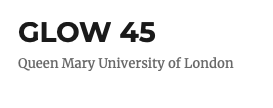Many attend GLOW45 at Queen Mary University of London this week!
Eunsun Jou: Korean addressee honorification as cyclic agree at Force: Comparison with Magahi [abstract]
The Weekly Newsletter of MIT Linguistics
Many attend GLOW45 at Queen Mary University of London this week!
Eunsun Jou: Korean addressee honorification as cyclic agree at Force: Comparison with Magahi [abstract]
Speaker: Canaan Breiss (MIT)
Title: When bases compete: experimental and computational studies of Lexical Conservatism
Time: Monday, April 25th, 5pm - 6:30pm
Abstract: (This talk is a sequel to the presentations given on 4/4 and 4/11)
In this talk I examine the interaction of the phonological grammar and the lexicon through the lens of Lexical Conservatism (Steriade, 1997). This is a theory that addresses how the distribution of bases (existing stem allomorphs in a morphological paradigm) influence the way those paradigms accommodate novel members. The idea is that a phonological alternation only applies to novel words if there is an existing base form present elsewhere in the paradigm that offers the needed phonological material. Thus compénsable, for “able to be compensated”, undergoes stress shift (that is, *cómpensable) because the existing word compénsatory contains the compéns- allomorph. In contrast, *inúndable, for “able to be inundated” is judged worse than ínundable, since there is no existing base that can provide the stressed vowel (there is no form in inúd-). Using experimental data from English and Mexican Spanish, I demonstrate that this dependency between paradigm structure and phonological process application generalizes to entirely novel words in a probabilistic manner. Further, contrary to previous assumptions, I find that all stem allomorphs in a paradigm play a role in determining the form of the novel word, rather than only those that could reduce the markedness of the novel form (per Steriade (1997), Steriade & Stanton (2020)). I propose a novel grammatical model where allomorphs in the lexicon exert analogical pressures on novel words, which are cross-cut by phonological markedness constraints.
Speaker: Harvey Lederman (Princeton)
Title: Fregeanism, sententialism, and scope
Time: Thursday, April 28th, 12:30pm - 1:50pm
Abstract: Among philosophers, Fregeanism and sententialism are widely considered two of the leading theories of the semantics of attitude reports. But these theories have received much less recent attention from linguists. This talk will aim to bridge this divide. I’ll present a new formal implementation of Fregeanism and sententialism, with the goal of showing that the theories can be developed in sufficient detail and concreteness to be serious competitors to theories which are more popular among semanticists. I’ll start by offering a modern treatment of quantifying in for Fregeanism and sententialism, in the style of Heim and Kratzer (1998), and then show how these theories can— somewhat surprisingly—account for “third readings” (Fodor, 1970) on the model of the “Standard Solution” from possible-worlds semantics (von Fintel and Heim, 2002). The resulting Fregean/sententialist proposal has a distinctive attraction: it treats data related to counterfactual attitudes (Ninan, 2008; Yanovich, 2011; Maier, 2015; Blumberg, 2018)—which have proven challenging to accommodate in the setting of possible worlds semantics—straightforwardly as third readings.